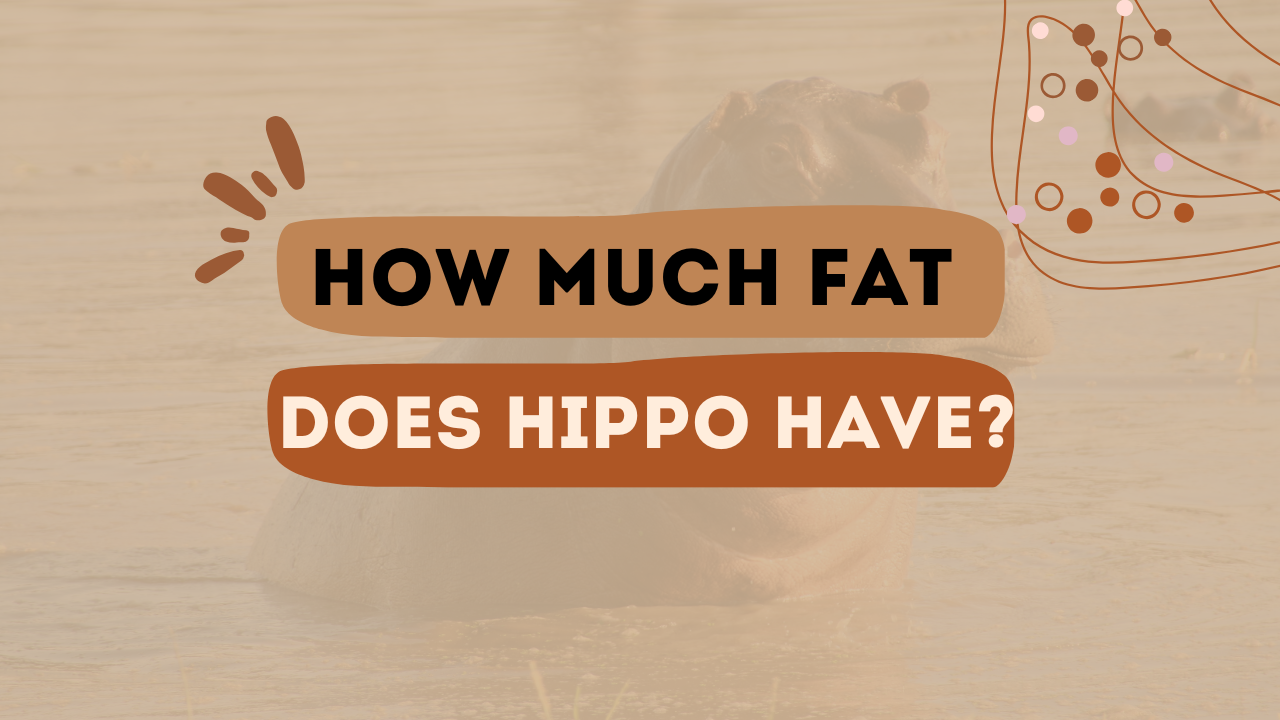A common question that arises when people think of these large animals is: How much fat does a hippo have?
Hippos are fascinating creatures and often admired for their size, strength, and distinctive appearance. These massive animals are primarily found in sub-Saharan Africa, where they spend a lot of their time in water.
While hippos may look chubby and rotund, they are also quite agile, both on land and in water.
Understanding the fat content of hippos gives us greater insight into their overall health, habitat needs, and evolutionary adaptations.
Understanding the Hippopotamus Physiology
Hippos are one of the largest mammals on Earth with adult males weighing up to 4,000 kilograms 8,800 pounds or even more while females can weigh slightly less.
Despite their bulky appearance hippos are not covered in a thick layer of fat like some other large mammals such as whales or seals.
Instead their massive size is a result of both muscle mass and fat, with fat making up a smaller portion of their total body weight.
The majority of a hippo’s mass is concentrated in its muscular body, particularly around the neck, shoulders, and chest, which allows them to move quickly and powerfully both in the water and on land.
Their round, barrel-shaped bodies are ideal for buoyancy, enabling them to stay afloat while grazing in aquatic environments.
How Much Fat Does a Hippo Have?
Hippos have a relatively low fat percentage compared to other large mammals. Most of their fat is stored around their internal organs, including the heart, liver, and kidneys, which helps protect these vital organs.
The fat layer around the organs also plays a role in providing energy during periods when food is scarce.
While the external fat covering of hippos is minimal, they do have a thicker layer of fat underneath the skin in some areas, especially around their bellies and backs.
This fat provides insulation, helping hippos regulate their body temperature, especially when they are exposed to intense sunlight during the day.
Interestingly, hippos are known to secrete a natural substance from their skin that acts as a sunscreen. This reddish, oily secretion serves two purposes: it helps to keep the skin moist, and it also protects the hippo from harmful UV rays while they bask in the sun.
This secretion gives the hippo’s skin a reddish tint and has been referred to as “blood sweat.”
Body Fat Percentage
The body fat percentage of a hippo is estimated to be relatively low, hovering around 10% to 15% of their total body weight. This figure is much lower than that of marine mammals, such as seals or whales, which can have body fat percentages of 40% or more.
Hippos’ low body fat is likely a result of their aquatic lifestyle, as the dense, muscular structure of their bodies helps them to sink or remain submerged in water for long periods.
Why Hippos Need Fat: Survival and Energy Storage
Although hippos don’t have a thick layer of fat, the fat they do have is critical for their survival. The fat stored around their internal organs is an important energy reserve, particularly in times of food scarcity.
Hippos are herbivores, mainly grazing on grasses, and their feeding habits often involve long hours of foraging.
In their natural habitats, food availability can fluctuate, especially during the dry season when grasslands may become sparse. Having a small amount of stored fat helps hippos endure these lean periods.
Additionally, the fat provides essential insulation in both the cold and the heat, ensuring that the hippo’s body temperature remains within a safe range.
How Hippos Use Fat in Their Daily Lives
Hippos are known for spending a significant amount of time in water. They use their fat reserves when they are not feeding, particularly during periods of inactivity. Hippos often remain submerged for long hours during the day, as they are nocturnal animals that forage at night.
While in the water, they can remain relatively still, using little energy to maintain buoyancy.
Their fat also plays a role in helping them stay hydrated. By storing fat in strategic areas of the body, hippos are able to better regulate water retention and maintain their energy levels throughout the day.
Comparing Hippos to Other Large Mammals
When comparing the fat content of hippos to other large mammals, it’s clear that hippos are relatively lean. Unlike marine mammals, which rely on thick layers of fat for insulation and energy storage, hippos rely more on muscle mass and their aquatic lifestyle to stay healthy.
For instance, elephants, another large mammal, have a higher body fat percentage, particularly in the form of fat stored in their large, floppy ears.
In contrast, whales, seals, and other marine animals depend on a thick layer of fat, known as blubber, to survive in cold environments and provide buoyancy in water.
Hippo Fat and Health
While fat is necessary for hippos’ survival, an excess or deficiency in fat can lead to health problems. If a hippo gains too much fat, it could face challenges in terms of mobility, heat regulation, and overall health. Conversely, if a hippo is too lean, it may struggle to survive in harsher conditions or during periods of food scarcity.
It is important for hippos to maintain a healthy balance of fat to ensure they have the energy needed for both daily activities and survival during lean times. In the wild, the hippo’s diet of grass and vegetation typically provides the nutrients and energy they require to maintain this balance.
Conclusion
In summary, while hippos may appear chubby, their fat content is relatively low compared to other large mammals. The fat they do have is essential for their survival, providing insulation, energy storage, and protection for their internal organs. Hippos rely more on muscle mass and their aquatic environment to maintain their size and agility.
Understanding how much fat a hippo has gives us a deeper appreciation for the unique adaptations these animals have evolved to thrive in their natural habitats. By maintaining a balance of fat and muscle, hippos can continue to be the remarkable creatures that they are—both powerful and efficient in their ability to survive in the wild.

